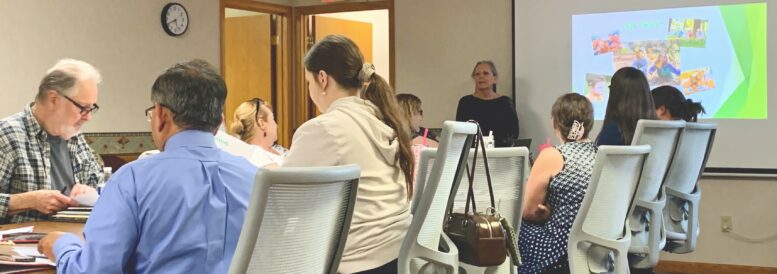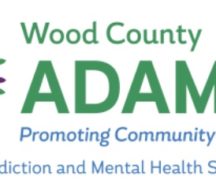By JULIE CARLE
BG Independent News
The federal budget cuts that trickle down to the state and then to local jurisdictions continue to create uncertainty for Wood County mental health and addiction services agencies.
As the Wood County Alcohol, Drug Addiction and Mental Health Services Board continues the allocation process for fiscal year 2026, two Wood County mental health agencies recently discussed what changes they will have to make with the proposed 8% budget reductions from the county board.
The National Alliance on Mental Illness (NAMI) of Wood County “has been a collaborative partner in this system of care,” said Executive Director Jessica Hartman. “We’ve always basically done what has been asked of us and have tried to meet the needs of the community as it’s been requested.”
The agency provides peer-led education programs, support groups and community outreach to address mental health stigma and connect people to services. “We were one of the sub-recipients of some of the State Opioid Stimulus (SOS dollars. We were not able to access that because of how everything shifted and changed,” she said.
NAMI Wood County has worked to diversify its funding with grants in the past, she said. However, all the larger grants will be completed by the end of June, “and we’re not quite sure if we’ll receive some of the other grants.”
The last couple of years, the agency received about $80,000 “which is what it took to make our budget whole,” Hartman said.”That’s how we’ve been asked to budget with our contract here (WCADAMHS).”
“We don’t have an office manager who answers the phone. We don’t have a receptionist, so we’re answering the phone, providing the services. I’m writing policies. We’re doing all these things ourselves,” she explained. “All these things take time and money.”
With grants reduced, philanthropic giving down and previous sponsorships not renewed, the NAMI budget for the next fiscal year will have a large deficit.
“We’ve already cut benefits for the staff, and we’re not getting raises,” she said. “Last year, I advocated for an increase in funding because this board had not given us an increase in five years. We are still operating on the same level we had five years ago.”
Hartman said the already small staff of five and three interns is stretched to help with capacity and the wide range of services provided.
When the agency has to take the projected 8% budget cut, Hartman anticipates having to cut some staffing by December.
CRC also faces budget dilemma
Children’s Resource Center (CRC) also faces uncertain budget challenges in the coming fiscal year.
CRC Chief Executive Officer Melanie VanDyne discussed the organization’s wide range of mental health services for children and youth, including a comprehensive continuum of mental health services such as 24/7 crisis response, prevention, outpatient therapy and residential treatment.
“We are facing, as all the other providers under the board’s funding, an 8% budget reduction,” VanDyne said.
The new regional residential facility that is being constructed has already experienced a significant increase in materials. The state indicated the agency would be eligible to apply for a $2 million grant called the Youth Resiliency Grant through the Ohio Department of Mental Health and Addiction Services. The grant requires a $250,000 matching grant, which the WCADAMHS Board had previously agreed to provide the match.
“Fast forward to budget time and that has to come from somewhere,” she said. “We need to reduce our budget by the $250,000 in addition to the 8%. We are struggling to figure that out.”
For the crisis stabilization and mobile response services, which currently provides 24/7 crisis intervention, VanDyne said they are looking at eliminating two full-time clinical positions for daytime (8 a.m. until 8 p.m.). Additionally, they plan to reduce the crisis response from 24/7 to 8 a.m to 8 p.m. seven days a week.
“We anticipate a possible change to a statewide regionalized mobile response management,” she said. “if that happens, and if the state did their calculations correctly, that will be funded through the state rather than from the WCADAMHS budget.”
Some of CRC’s countywide prevention services will no longer be provided, such as the “raising safe kids” group and the positive parenting that is part of that program. However, VanDyne said those programs would be shifted into case management services, which are funded by fee-for-service.
“It is not that we won’t offer the services, but it will not be the prevention programs that we’ve been providing,” she said.
The sexual abuse programs in the schools are also slated for elimination.
“CRC has been a brilliant partner,” WCADAMHS Executive Director Amanda Kern told the board. The agency’s request for next year has been revised four times and is still being revised before allocations are finalized.
“There is more work to do. We will nail down what the final figures are for each category, then we’ll be able to give you the details of how we get to the reduction,” she said.





